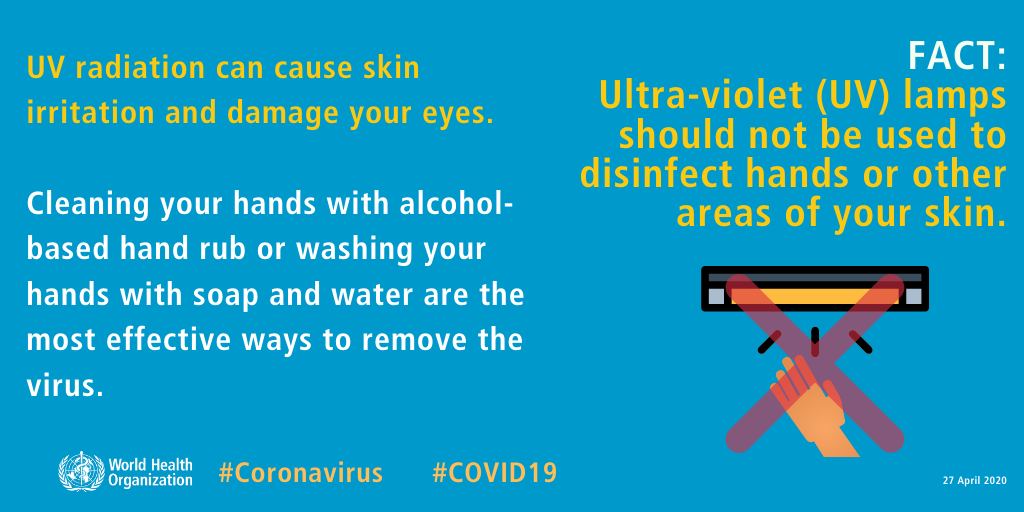EC educators are in a tough spot now. With the stepped-up requirements in cleaning and disinfection for schools, they need to spend more time cleaning the school before, during, and after every school session. This intensified disinfection regime also comes at a time where manpower is scarce. As a precaution against Covid-19, no staff and children is allowed to be in school if they are experiencing respiratory syndromes. Given that the COVID virus spreads through direct, indirect, and close contact, and laboratory tests have demonstrated that the virus can survive on environmental surfaces for 6 hours to 9 days. Proper disinfection of the environment is more important than ever to break the chain of infection!

In the concept of hierarchy of control, engineering control is defined as the use of machinery to reduce the risk of hazard to as low as reasonably practicable, without the involvement of manpower. This comes as an attractive alternative to reduce the number of pathogens in the school environment without the use of manpower.
In this article, I aim to summarise the research findings on using UV disinfection in schools. (This is part one of two articles discussing on common engineering control methods for school disinfection)
Disclaimer: All data and statistics are based on publicly available data at the time of publication. Some information may be out of date.
Ultraviolet (UV) radiation
UV radiation comes naturally from the sun, but it can also be created by artificial sources used in industry, commerce, and recreation. UV radiation covers the wavelength range of 100–400 nm, is divided into three bands:
- UV-A (315-380 nm) – used for tanning beds
- UV-B (280-315 nm) – main cause for skin burn, cancer
- UV-C (200-280 nm) – a.k.a. UV germicidal irradiation (UVGI), used in drinking water disinfection, laboratory, hospital setting, amongst others.
UV-A and UV-B light cause sunburns and premature skin aging, and exposure to both are associated with the development of skin cancer. UV-C light is the most harmful and fortunately, it doesn’t reach the Earth’s surface because our atmosphere absorbs it.

How does UV radiation kill pathogens?
Pathogens’ DNA absorbs strongly for UV-C radiation (200nm to 280nm). After the absorption, the pathogens are inactivated and thus no longer able to infect the next susceptible host. UVGI is typically used in healthcare settings, with short turn-around time (less than 30 min) and there are no chemical residues left on the surfaces at the end of the disinfection process.

Does UV radiation kills the Covid-19 virus?
To date, UVGI has been effective against coronaviruses (SARS-Cov & MERS-Cov) in all published investigations. However, there is no research data that directly supports the killing of the Covid-19 virus by UVGI. Given that the Covid-19 virus resembles highly with SARS and MERS in their molecular structure, researchers are postulating that the UVGI would also be effective against the Covid-19 virus.
What should you look out for if you intend to buy a UV disinfection machine for your school?
There are a number of factors you should look out for when deciding on a UVGI machine for your school.
- Wavelength – wavelength of UV must range from 200nm to 280nm (UV-C)
- The intensity and the distance of the surface from the UV source – every UVGI machine would come with a recommended method of application. In simple terms, there are specific ways to use each UVGI machine for them to be effective against pathogens.
- Duration of exposure – the exposure to rid of the pathogen can range from 30 to 60 mins.
- Irradiation angle – The need for a line of sight to be effective. High-touch points that are obscure may be missed, e.g. areas of door handles, handlebars, or toilet flush not facing the UV light will not be disinfected. Typically, there needs to be a direct exposure for the UVGI to be effective.
- Surface cleanliness – dirt and grease on surfaces can reduce the effectiveness of UVGI. It is useful for the school to perform cleaning on the surfaces before using UVGI for disinfection.
Can a UVGI machine replace your current cleaning of toys?
Sadly, the answer is no. UV disinfection is always used as the final step to disinfection. Toys after playing by the children may contain pathogens, dirt, sweat, saliva, which, cannot be cleaned properly with only UVGI machines.
At the hospitals and the laboratory settings, technicians always clean the items (e.g. glassware) before placing them inside the UVGI cabinet for the final step of disinfection. In water treatment plants, UV disinfection is again the last step, before supplying the potable water to households.
Even though UVGI disinfection cannot fully replace your normal washing process of the toys, it will, however, ensures a more complete disinfection of the toys. A cheaper, more economical, and the proven option is to stick to the disinfection methods (using diluted bleach) listed inside the infection prevention guideline by ECDA.
CAUTION!
Ultra-violet (UV) lamps should not be used to disinfect hands or other areas of your skin as it can cause skin irritation and damage your eyes. (WHO) Cleaning your hands with alcohol-based hand rub or washing your hands with soap and water are the most effective ways to remove the virus.
In addition, the UVGI machine should be kept out of reach from the children at all times.

You may also want to check out another article on the disinfection of surfaces for preschools.
References:
- Chin. A et al. (2020). Stability of SARS-CoV-2 in different environmental conditions. Lancet Miccrobe; published online Apr 2. DOI: 10.1016/S2666-5247(20)30003-3
- van Doremalen N et al. (2020). Aerosol and surface stability of SARSCoV-2 as compared with SARS-CoV-1. N Engl J Med; published online March 17. DOI:10·1056/NEJMc2004973

Ahaa, its good dialogue concerning this post here at this blog, I have read all
that, so now me also commenting here.
Fabulous, what a web site it is! This weblog provides
helpful information to us, keep it up.
Nice post. I used to be checking constantly this blog
and I am impressed! Extremely useful information particularly the last phase :
) I handle such info much. I used to be seeking this particular info for a
very lengthy time. Thank you and best of luck.
Like!! I blog frequently and I really thank you for your content. The article has truly peaked my interest.
I am really grateful to the holder of this web site who has shared this wonderful article at here. Stacee Burl Elyn
The time to read or pay a visit to the content or internet sites we have linked to beneath. Ellene Jdavie Bergquist
Great article! We will be linking to this particularly great content on our site. Keep up the good writing. Mallory Trey Colton